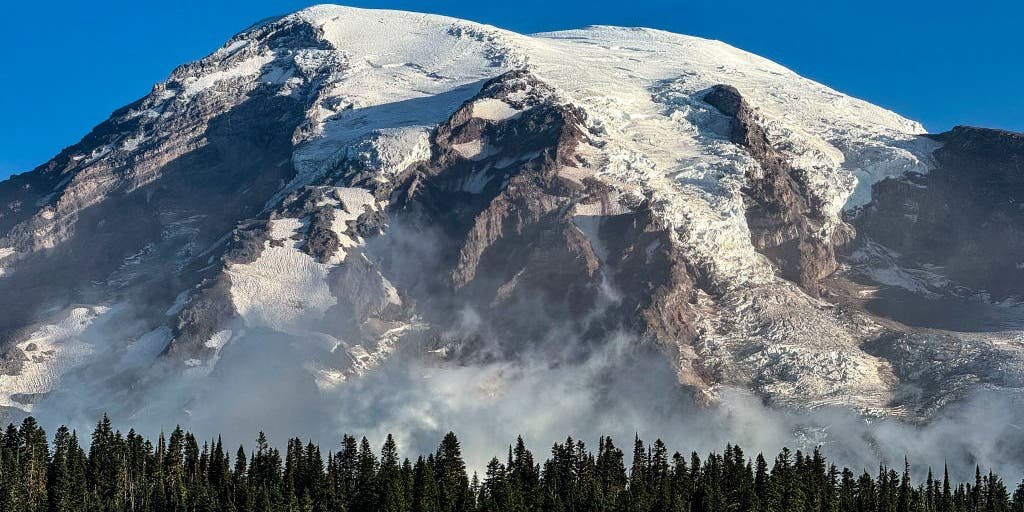Unraveling the Tectonic Tensions Beneath Mt. Rainier: A Study of Seismic Swarms
As dawn broke over the evergreen ridges of the Cascade Range, a serendipitous rumble stirred beneath Washington State’s iconic Mt. Rainier. A series of small earthquakes, detected by the U.S. Geological Survey (USGS), echoed through the depths of the mountain, prompting both intrigue and trepidation among local residents and scientists alike. While the tremors, occurring at depths between 1.2 and 3.7 miles, registered at a mere 1.7 in magnitude, they touch upon a complex narrative of volcanic activity that has captivated geologists and laid the groundwork for future studies on the relationship between seismic activity and volcanic behavior.
The Earth’s Pulse: A Closer Look at Seismic Swarms
Geologists often describe earthquake swarms—discrete, clustered bursts of seismic activity—as the mountain’s way of communicating. According to Dr. Elara Kincaid, a volcanologist at the Cascade Volcano Observatory, “These swarms typically occur a few times a year under Mt. Rainier. However, the recent swarm stands out due to its intensity and frequency.” U.S. Geological Survey data indicates that the local tectonic landscape can be in flux and vulnerable to both natural and anthropogenic influences.
Detritus of Natural Forces
This is not the first pivotal seismic episode at Mt. Rainier. Historical records suggest that the last significant earthquake swarm occurred in 2009, during which over 1,000 quakes were recorded, peaking at a magnitude of 2.3. Such activity prompts the question: What causes these swarms?
- Flood Interaction: Past swarms have been attributed to the circulation of floods interacting with underlying fault lines.
- Tectonic Movement: The area is continually shaped by the slow but persistent shifts of tectonic plates.
- Geothermal Pressure: Rising magma can cause stresses in surrounding rock, which may manifest as swarms.
While geologists remain vigilant, they stress that the current level of seismic activity does not indicate an impending eruption. “Currently, there is no indication that the level of earthquake activity is cause for concern,” the USGS stated in a recent press release, maintaining that Mt. Rainier’s alert level remains “Green/Normal.”
The Community’s Perspective: Anxiety Amid Uncertainty
Nonetheless, for the residents of the Puget Sound region, the prospect of volcanic activity evokes a collective anxiety that resonates deeply within their community. Local resident Maria Sanchez expressed a mix of curiosity and concern: “Hearing that there are earthquakes down below can be unsettling. Mt. Rainier brings beauty to our lives, but it also carries the weight of unpredictability.”
Engaging with the Unknown
Communities situated near active volcanoes often face a unique duality—both reverence for natural beauty and apprehension over latent potential threats. This ambivalence draws parallels from studies in environmental psychology, which suggest that natural disasters can engender a heightened sense of community resilience and preparedness. Dr. Felix Harrington, a sociologist studying volcanic communities, emphasizes that “communities adapted to living near volcanoes often develop robust local networks for monitoring and emergency preparedness.”
Glacial Legacy and Future Research Directions
The echoes of Mt. Rainier’s seismic whispers unveil a broader narrative of glacial and volcanic interplay. Past research indicates that geophysical conditions, like ground deformation and gas emissions, can precede volcanic activity—but primary indicators remain elusive. The mountain’s last eruption, approximately 1,000 years ago, left a landscape of glacial remnants, forging upward as towering bastions against time.
This interrelationship underscores the need for continued research. Funding from the National Science Foundation is currently allocated to slice through the complexity of volcanic mapping. “By using modern geophysical techniques, we’re able to shed light on volcanic behavior, enhancing our prediction capabilities,” Dr. Kincaid added. As technology advances, there’s a growing realization that understanding these seismic phenomena requires cross-disciplinary approaches combining geology, sociology, and public health.
The Unfolding Story of Mt. Rainier
With every tremor beneath its surface, Mt. Rainier has become a living testament to both the magnificent forces of nature and the pulse of human curiosity. As scientists pore over the data and residents remain watchful, a rich tapestry of inquiry unfolds, intricately weaving local history, geology, and social dynamics into one compelling narrative. As Dr. Harrington poignantly remarked, “The story of Mt. Rainier is not merely one of geology; it intertwines with human experience, revealing our vulnerabilities and resilience in the face of nature’s majesty.”









